40 Drought-Tolerant Plants That Will Improve Your Home's Curb Appeal
Plant pros reveal the prettiest, low-water plant options.
Fact checked by Isaac Winter
Drought-tolerant plants may bring to mind barren rockscapes and boring curb appeal, but that doesn't have to be the case when you're choosing plants that don't require much watering. "There are countless options for dry-climate curb appeal," says Noelle Johnson, a landscape consultant and the pro behind the plant advice site AZ Plant Lady. "From the vibrant colors of drought-tolerant ground covers, shrubs, and vines to the unique shapes of cacti and other succulents, there are many options to add beauty to outdoor spaces."
Related: 15 Impossible-to-Kill Outdoor Plants
A landscape design that's both climate-friendly and attractive lies in finding the right balance. "I like to think about adding beauty and benefit," says Arianna Iappini, the gardening expert and coach behind The Birch Arbor Gardens. "A lovely flowering aromatic will add visual interest and feed the native pollinators. Many drought-tolerant plants offer both eye-catching appeal and help to elevate biodiversity." Check out some pro-approved, drought-tolerant plants below that'll thrive with very little water and still give you one of the prettiest yards on the block.
Meet Our Expert
Noelle Johnson is a landscape consultant and the pro behind the plant advice site AZ Plant Lady.
Arianna Iappini is the gardening expert and coach behind The Birch Arbor Gardens.
Chris Lambton is a professional landscaper, and host of DIY Network's Yard Crashers.
Christy Dailey is a gardening expert at christygardens.
Kevin Lenhart is the design director at Yardzen.
Kate Singleton is the director of design for Tilly.
Lantana (Lantana camara)
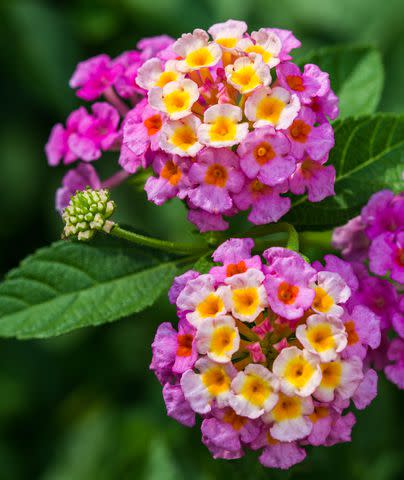
Sun Exposure Full
Soil Well-drained
Zones Perennial in Zones 9 through 11, but can be grown as a summer annual in Zones 1 through 8
Color Varieties Red, pink, orange, yellow, blue, white
Size Up to 6 feet high and 6 feet wide
A heat-loving bloom known for its colorful palette and vine-like structure, lantana is an excellent choice for gardeners who want a pollinator-friendly plant that will establish itself quickly in the landscape. "Lantana is one of the best options for color," says Johnson. "They come in ground cover and shrub forms, easily attract butterflies, and will continue to bloom over a long period."
Coneflower (Echinacea)
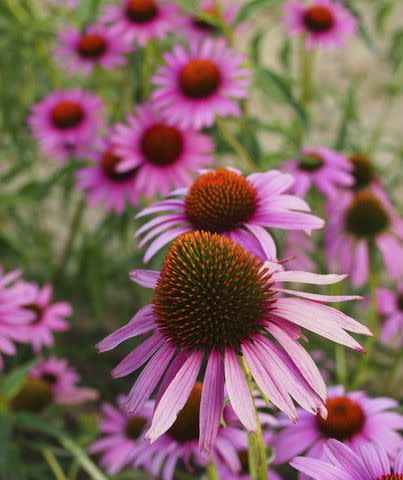
Sun Exposure Full
Soil Well-drained
Zones Zones 3 through 8
Color Varieties Red, pink, orange, yellow, green, purple, white
Size Up to 3 feet tall and 2 feet wide
Bold, cheery, and able to grow practically anywhere, coneflower is a hearty little bloom that thrives on near-neglect while adding a punch of playful color to your landscape. "Coneflower is a fantastic option for a drought-tolerant flower that stands up well to high heat and dry conditions," says Iappini. "It also attracts loads of butterflies!"
Related: How to Grow Flowers That Bloom All Year Round
Pink Muhly Grass (Muhlenbergia capillaris)
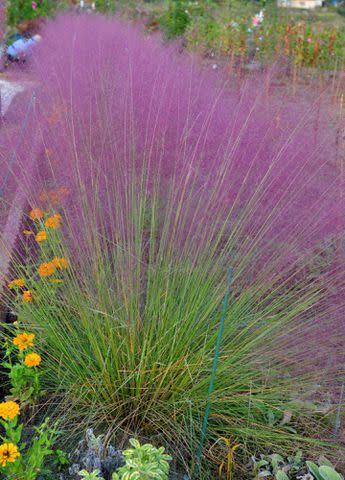
Sun Exposure Full to partial
Soil Dry, well-drained
Zones Zones 5 through 11
Color Varieties Pink, pinkish red
Size Up to 3 feet tall and 3 feet wide
Characterized by dream-like wisps of cotton candy-colored grass, pink muhly grass adds an ethereal vibe to any landscape. "I like to plant these grasses in groups of three or five," suggests Johnson. "They also have beautiful burgundy plumes in fall that add cool-season interest."
Yarrow (Achillea millefolium)
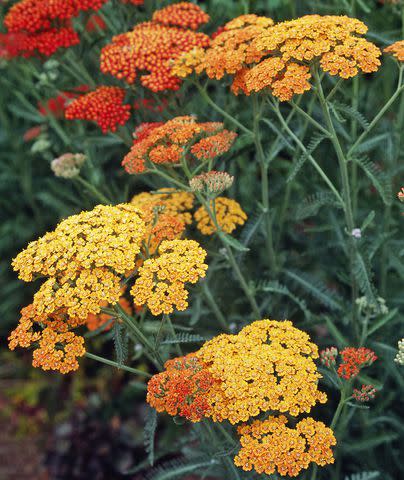
Sun Exposure Full
Soil Well-drained
Zones Zones 3 through 9
Color Varieties Red, orange, yellow, purple, white, bicolored
Size Up to 3 feet tall and 3 feet wide
"This plant flowers most actively in May and June, so use it in your garden as a seasonal color accent since they come in different colors like pink, purple, and yellow," says Chris Lambton, professional landscaper, and host of DIY Network's Yard Crashers. "Place it near plants that flower earlier in the spring, such as tulips, or ones that flower later in the summer, like black-eyed Susans." It thrives in hot conditions and can also be grown in high elevations.
Lavender (Lavandula)
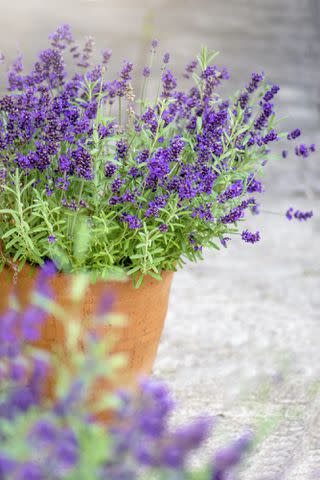
Sun Exposure Full
Soil Dry, well-drained
Zones Zones 5 through 9
Color Varieties Purple
Size Up to 3 feet tall and four feet wide
A charming cottage garden staple, lavender plants contribute an effortless, wildflower effect in your yard without sacrificing buckets of water. "Lavender is a great plant that prefers full sun and well-drained soil," says Iappini. Choose from a range of colors, including blue, purple, and white. "Lavender smells wonderful, attracts beneficial insects, and will only get better and more vigorous from year to year."
Sage (Salvia officinalis)
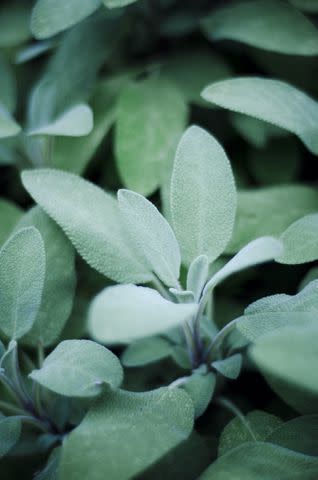
Sun Exposure Full
Soil Well-drained sandy
Zones Zones 5 through 8
Color Varieties Blue-purple flowers
Size Up to 2.5 feet tall and 3 feet wide
Often thought of as a vegetable garden crop, sage can make a great landscape addition for homeowners on the hunt for drought-friendly plants. "Bush sage, meadow sage, and Russian sage are all stunning, flowering perennial plants that happen to be drought-tolerant," says Iappini. "They're a great way to add visual interest to your landscape and help to provide food for hummingbirds and other pollinators."
Red Emu Bush (Eremophila maculata 'Valentine')
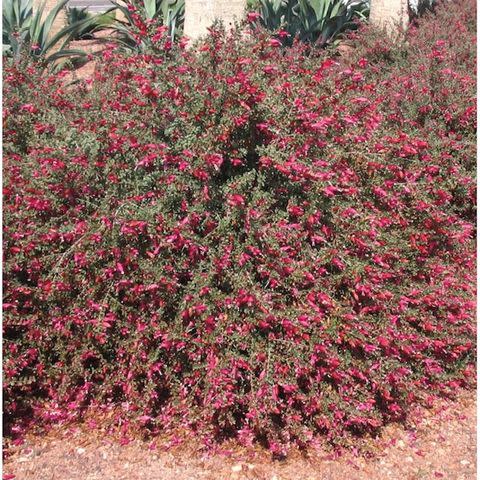
Sun Exposure Full to partial
Soil Well-drained
Zones Zones 8 through 11
Color Varieties Red
Size Up to 6 feet tall and wide
Delivering both vibrant color and desirable greenery, the red emu bush is a drought-tolerant plant that produces eye-catching, bell-like red flowers. "Red emu bush is a must-have for winter color that extends into spring," says Johnson. "Reddish-pink flowers add interest around the home when not much else is in bloom. I recommend planting them in groups of three in bare spots throughout the garden."
Shrubby Germander (Teucrium fruticans)
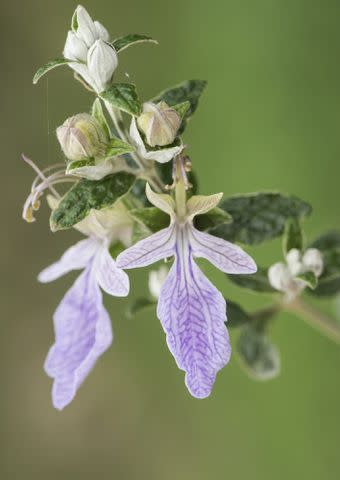
Sun Exposure Full to partial
Soil Well-drained
Zones Zones 4 through 10
Color Varieties Pink, blue, purple, white
Size Up to 6 feet tall and wide
A member of the mint family, the shrubby germander is a full, woody bush with gray-green leaves and a sweet, mild scent. "The gray-blue foliage of shrubby germander creates nice color contrast with green ground covers and shrubs and is a good option for planting under a window," says Johnson. "Their startling blue flowers are a delight when they appear from winter into spring."
Lamb's Ear (Stachys byzantina)
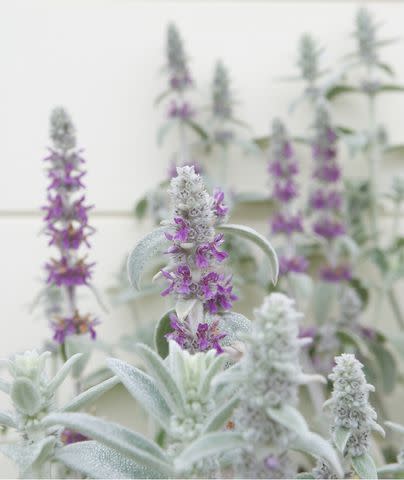
Sun Exposure Full to partial
Soil Well drained
Zones Zones 4 through 9
Color Varieties Purple
Size Up to 1.5 feet tall and 3 feet wide
This flowering perennial herb has a unique fuzzy texture. "It does well in partial-to-full sun," says Lambton. "It doesn't love hot and humid, so it's a great choice for dry climates." In colder climates, it will appear "dead" in the winter, but will come back to life in the spring. A word of caution from Lambton: This herb spreads as it grows, so keep that in mind when you're deciding where to plant it.
Butterfly Weed (Asclepias tuberosa)
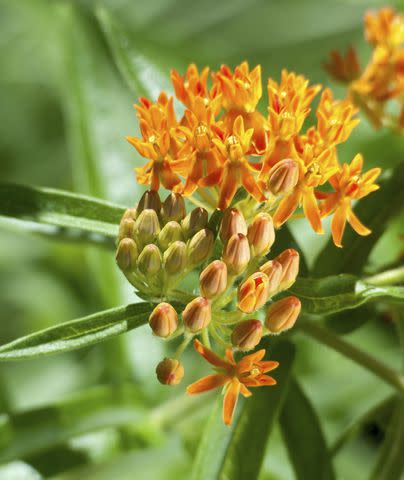
Sun Exposure Full
Soil Dry and well-drained
Zones Zones 4 through 9
Color Varieties Orange, yellow
Size Up to 2 feet tall and 1.5 feet wide
"These plants yield beautiful clusters of bright orange flowers that attract butterflies, especially monarchs," says garden expert Christy Dailey of christygardens. This perennial prefers well-drained, sandy soils, requires very little water, and blooms from May to September.
Russian Sage (Salvia yangii, formerly Perovskia atiplicifolia)
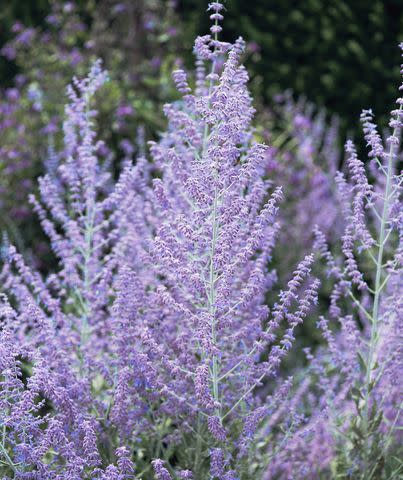
Sun Exposure Full
Soil Well-drained
Zones Zones 4 through 9
Color Varieties Blue, purple
Size Up to 5 feet tall and 4 feet wide
"These billowy and fragrant woody stems produce pretty purple flowers that bees and butterflies love," says Dailey. "They bloom from late spring through October." A mature plant grows to 3 to 5 feet tall and requires plenty of sun. It's sturdy enough to withstand wind and cold weather.
Rosemary (Rosmarinus officinalis)
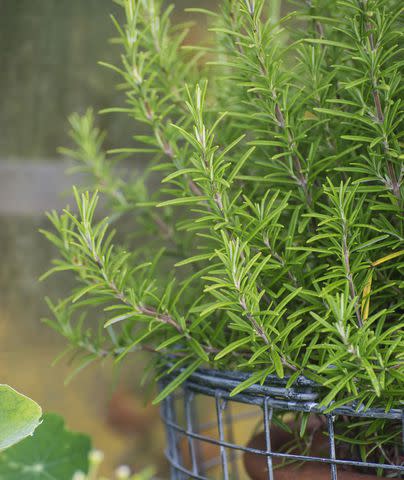
Sun Exposure Full
Soil Sandy, well-drained
Zones Zones 7 through 10 (can be grown as an annual or brought indoors for the winter)
Color Varieties Green
Size Up to 6 feet tall and 4 feet wide
Rosemary is a great addition to your garden because it's nice to look at and edible. "Since this is an evergreen plant, you'll want to prune it regularly to maintain a good shape—and if you're using it to cook, the freshest taste," says Lambton. "It loves the sun and can hold up well in dry conditions." If you live in a warmer region, rosemary will have no problem growing year-round. In colder climates, replace the in-ground plant when the weather starts getting chilly, or bring the plant inside if it's grown in a container.
Stonecrop (Sedum)
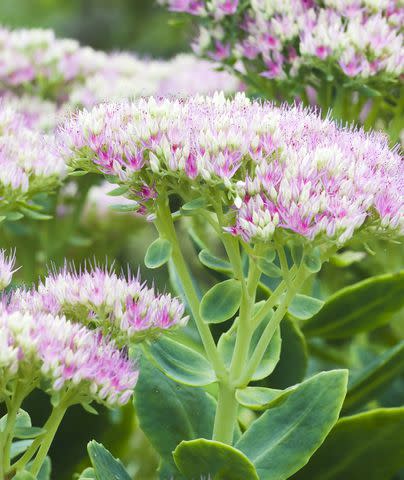
Sun Exposure Full to partial
Soil Sandy, well-drained
Zones Zones 4 through 9
Color Varieties Red, pink, yellow, white
Size Up to 2 feet tall and wide
The fleshy leaves on this plant help it retain water in dry conditions. "It comes in all shapes and sizes," says Dailey. "Some are upright, while others creep low to the ground, but all have attractive blooms of hot pink, lime green, and other vibrant colors." They thrive in soil that can drain well.
Black-Eyed Susans (Rudbeckia)
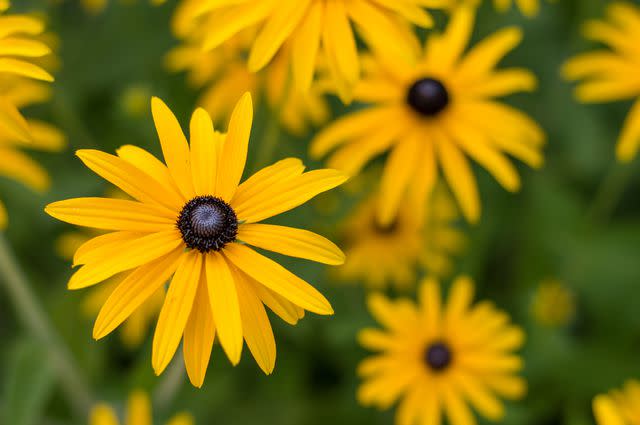
Sun Exposure Full
Soil Moist, well-drained
Zones Zones 3 through 10
Color Varieties Red, orange, and yellow
Size Up to 3 feet tall and 2 feet wide
These daisy-like blooms feature bold golden petals surrounding a brown-black center, and thrive in even the toughest conditions—including dry and sunny spots. "Black-eyed Susans have a wide native range and are a pollinator favorite," says Kevin Lenhart, design director at Yardzen. "It's a go-to plant for meadow planting designs."
Bougainvillea
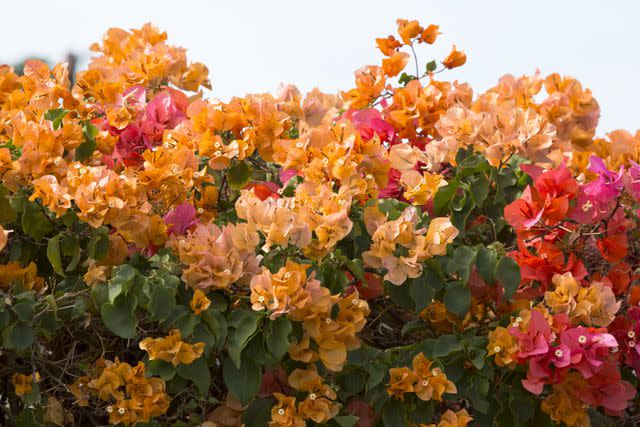
Sun Exposure Full
Soil Well-drained
Zones Zones 9 through 11
Color Varieties Red, pink, orange, yellow, purple, and white
Size Up to 20 feet tall and 40 feet wide
If you're living in the hottest parts of the country, this vibrant (yet super tough) climbing plant can add lots of bold color to your garden. (They can grow up to 40 feet in width!) You can find bougainvillea in a number of colors, including bold pinks, purples, oranges, yellows, and whites. If you live in colder climates and want a touch of this tropical plant, you can use it as an annual or a container that you overwinter.
"Bougainvillea is an extremely hard-working shrub and vine," says Kate Singleton, director of design for Tilly. "Noted for actually blooming more when very dry, this is a show-stopper in the landscape."
Trumpet Vine (Campsis Radicans)
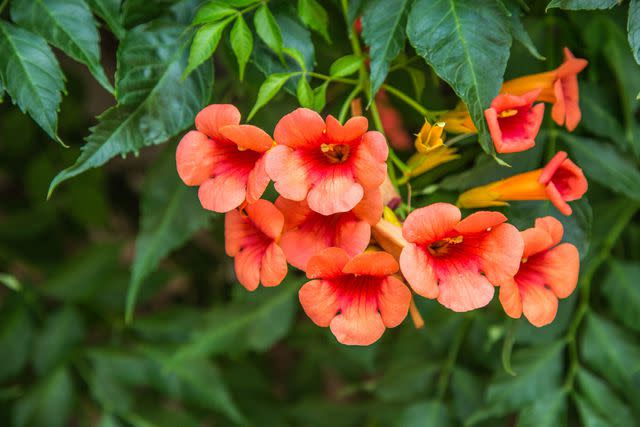
Sun Exposure Full to partial
Soil Sandy, moist, well-drained
Zones Zones 4 through 10
Color Varieties Red, orange, and yellow
Size Up to 40 feet tall and 10 feet wide
Once it's established in your garden, the trumpet vine and its bold orange and red blooms will thrive even in drought conditions. It grows quickly, and can reach up to 40 feet long—so it's great for covering structures like trellises.
Asters (Symphyotrichum)
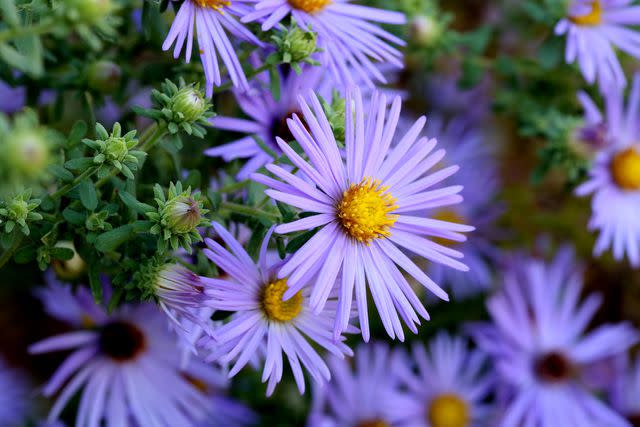
Debi Dalio/Getty Images
Sun Exposure Full
Soil Well-drained
Zones Zones 3 through 8
Color Varieties Pink, blue, purple, and white
Size Up to 6 feet tall and 4 feet wide
Long-blooming flowers with pretty purple petals and gold centers attract pollinators to this hardy plant, which can thrive in a variety of sun, soil and water conditions—including in drought.
Sweet Potato Vine (Ipomoea batatas)
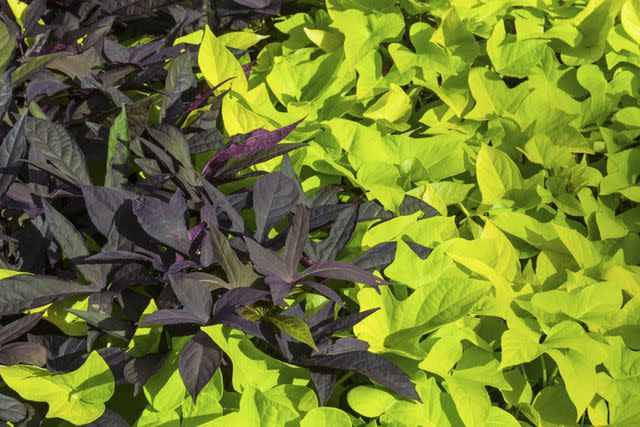
Sun Exposure Full
Soil Moist, well-drained
Zones Zones 9 through 11
Color Varieties Pink, purple
Size Up to 10 feet tall and 1 foot wide
No, you won't actually get any sweet potatoes off of this pretty vine, but it comes in an array of fun colors (including a vibrant lime green and deep purple), to add some interest to your landscaping—no flowers required.
Agave
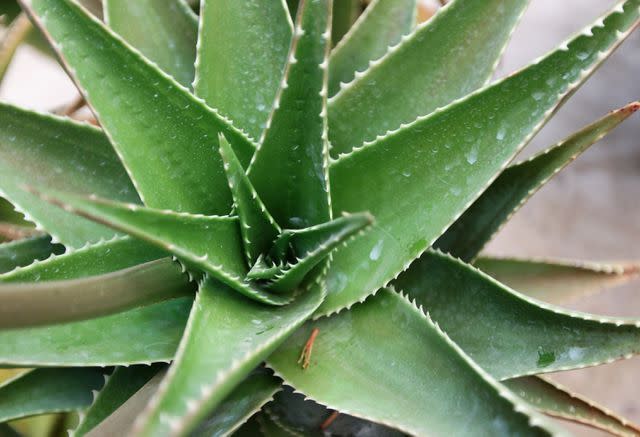
Sun Exposure Full
Soil Sandy, well-drained
Zones Zones 9 through 11
Color Varieties Yellow, green, and white
Size Up to 20 feet tall and 10 feet wide
Succulents in general are great drought tolerant plants, but the spiky agave can be a bold addition to your landscaping, with some versions growing up to 10 feet in size. "There are more than a few agaves to choose from," Lenhart says. "We favor the compact form of the A. victoria reginae, and the graceful (and less sharp) structure of the A. attenuata."
Related: How to Care for Succulents—and Keep Them Looking Picture-Perfect
Summer Snapdragon (Angelonia)
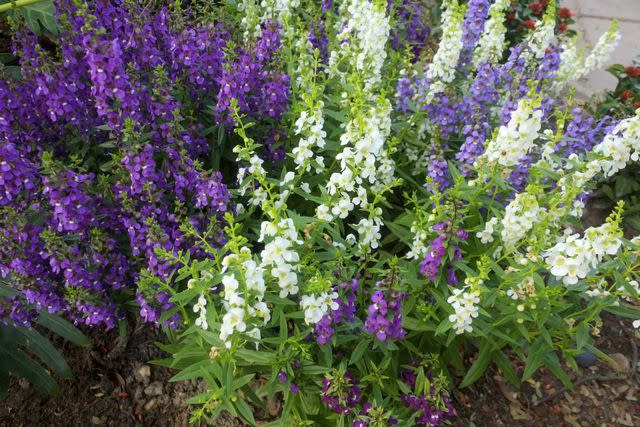
piaphyat50/Getty Images
Sun Exposure Full, partial
Soil Moist, well-draining
Zones Zones 9 through 11 (as a perennial)
Color Varieties Red, pink, orange, yellow, purple, white
Size Up to 4 feet tall and 1 foot wide
These bright and bold flowers look like snapdragons, but bloom for much longer—and return year after year. While it prefers a bit of moisture, it'll still keep blooming in drought conditions.
Dianthus
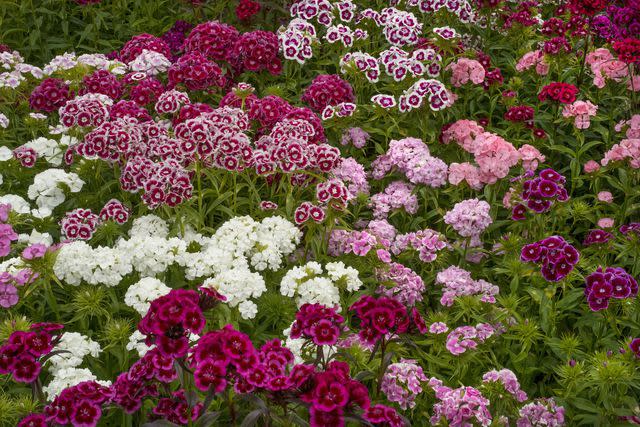
Mint Images / Getty Images
Sun Exposure Full
Soil Moist, well-drained
Zones Zones 4 through 9
Color Varieties Red, pink, lilac, and white
Size Up to 3 feet tall and 2 feet wide
These pretty and long-blooming plants (with varieties that can serve as annuals, biennials, or perennials) can tolerate drought—though they definitely do best in cooler temperatures.
Related: How to Know When to Use Perennials or Annuals in Your Garden
Salvia (Salvia Sylvestris)
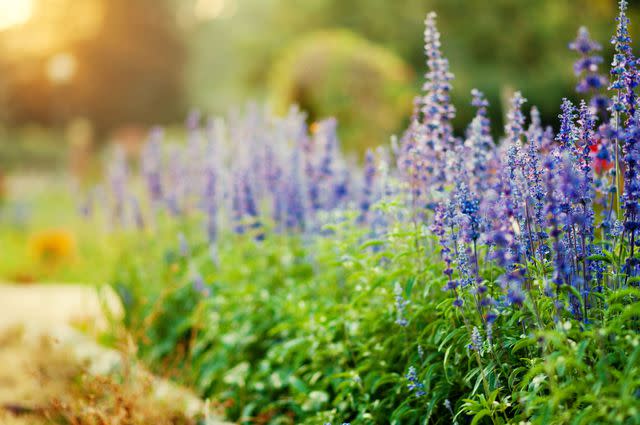
Sun Exposure Full
Soil Well-drained
Zones Zones 5 through 10
Color Varieties Red, indigo, purple, white
Size Up to 2 feet tall and 1 feet wide
Whether you opt for the perennial or annual varieties (which come in shades of indigo, red, white, and violet), salvia produce long-lasting blooms and thrive even in drought conditions. (Bonus: They're a pollinator-friendly plant that's popular with bees and butterflies.)
Honeysuckle (Lonicera)
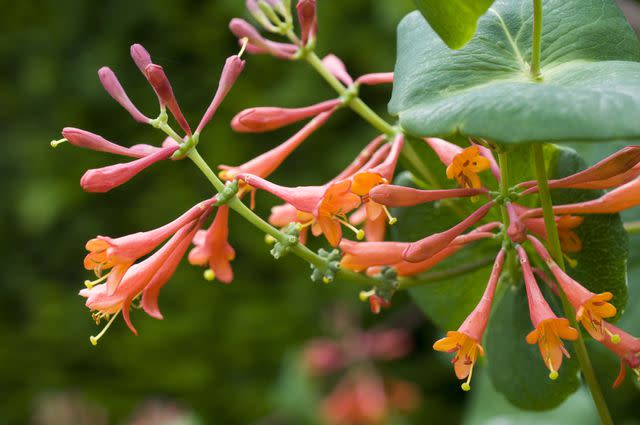
Sun Exposure Partial
Soil Moist, well-drained
Zones Zones 6 through 8
Color Varieties Pink, orange, yellow, and white
Size Up to 20 feet tall and 6 feet wide
Honeysuckle's super-fragrant blooms make it a popular climbing plant for adorning trellises and pergolas. While it'll need regular watering when it's getting established, after a few years, it can tolerate drought.
Related: Best Climbing Plants for Your Trellis or Pergola
Catmint (Nepeta)
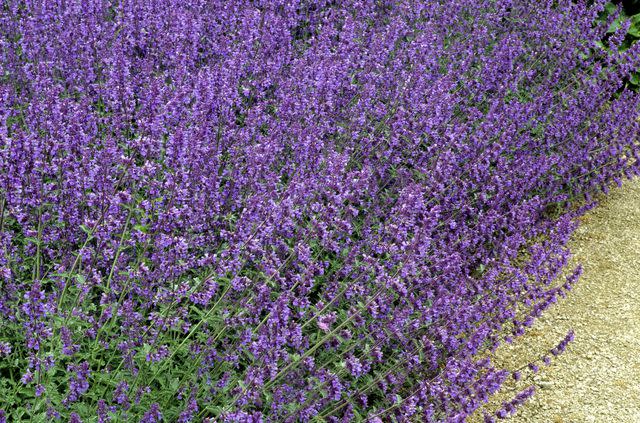
Sun Exposure Full to partial
Soil Well-drained
Zones Zones 3 through 8
Color Varieties Pink, purple, and white
Size Up to 2 feet tall and wide
"Gently sprawling stems packed with pale lavender flowers make this a great edging plant," Lenhart says. Catmint is a full-sun plant (though it can handle some shade), and can bloom all summer and into fall.
Creeping Jenny (Lysimachia Nummularia)
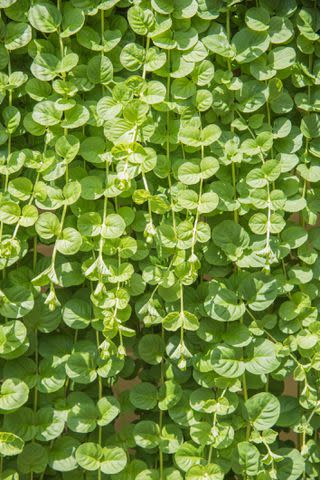
EAGiven/Getty Images
Sun Exposure Full
Soil Well-drained
Zones Zones 3 through 8
Color Varieties Yellow
Size Up to 4 inches tall and 1.5 feet wide
A member of the primrose family, creeping Jenny (AKA moneywort) is a lush plant that'll fill in the spaces around other plants, does well in both full sun and part shade—and can handle a bit of drought. "Creeping Jenny can be a beautiful addition to the landscape with the striking lime green color," Singleton says. "It's especially impactful when planted at the forefront of a raised bed where it can trail over."
Bergenia (Bergenia Cordifolia)
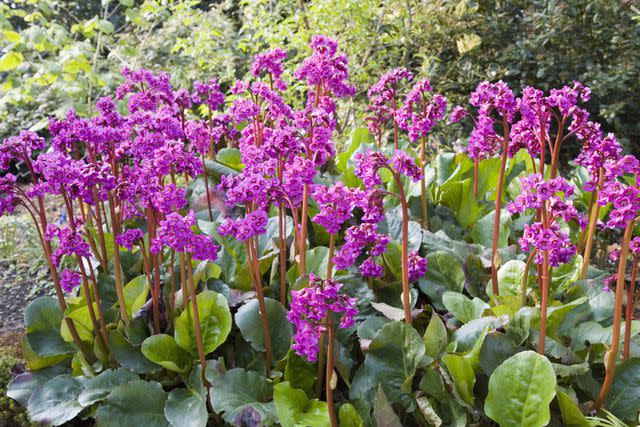
Ron Evans/Getty Images
Sun Exposure Partial to full shade
Soil Moist
Zones Zones 3 through 8
Color Varieties Red, pink, and white
Size Up to 2 feet tall and wide
Another drought tolerant perennial, bergenia thrives in the shade, helping to fill out your shade garden. While bergenia plants do best with moist soil, plants that are located in deep shade can handle stretches without.
Coreopsis
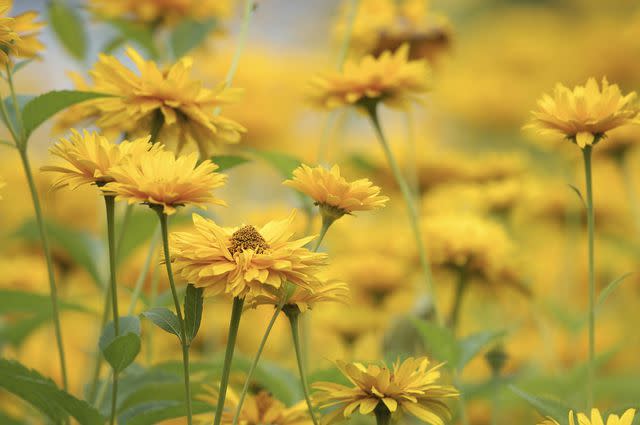
Sun Exposure Full
Soil Sandy, well-drained
Zones Zones 2 through 11
Color Varieties Red, pink, orange, yellow, and white
Size Up to 4 feet tall and 2 feet wide
Bright coreopsis blooms are a long lasting (and sunny) addition to a drought tolerant garden. They're a great easy-care plant option for beginner gardeners, as they require little maintenance. You'll need to water them regularly in the first year, but they'll tolerate drought every year after.
Hardy Geranium (Geranium Sanguineum)
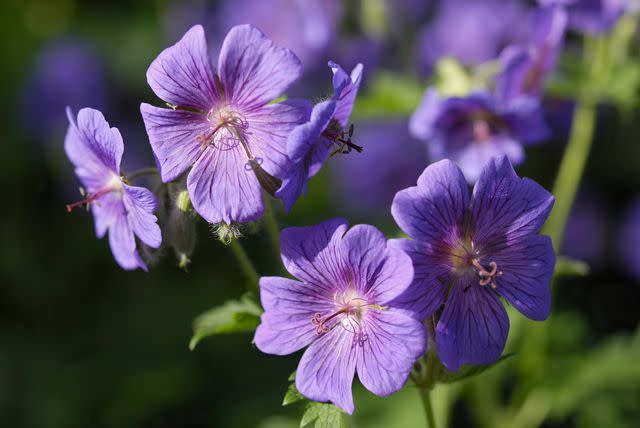
Sun Exposure Full to partial
Soil Well-drained
Zones Zones 3 through 9
Color Varieties Pink, blue, lavender, purple, and white
Size Up to 3 feet tall and wide
Also known as bloody geranium or bloody cranesbill, the hardy geranium creates sizable mounds of foliage and flowers that can thrive in pretty much any condition, from full sun to part shade, moist soil to drought conditions. They're one of the best heat-tolerant plants.
Related: How to Create a Pollinator-Friendly Garden
Bearded Iris (Iris X Germanica)
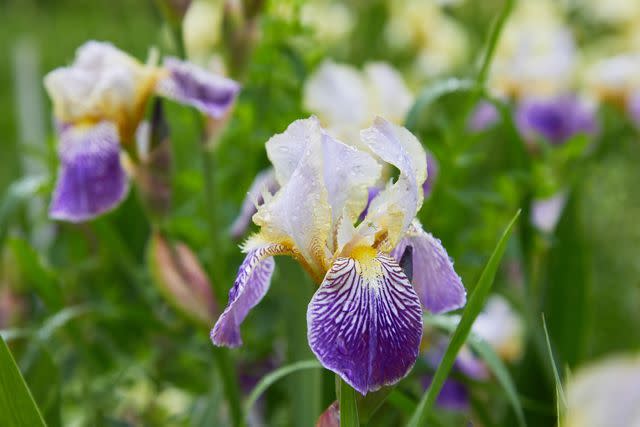
Sun Exposure Full
Soil Sandy
Zones Zones 4 through 9
Color Varieties Pink, yellow, blue, violet, and white
Size Up to 3 feet tall
Irises bloom beautifully in the spring and summer, in shades of white, gold, and purple. The perennial bearded iris is particularly hardy—it's disease resistant and drought tolerant.
Juniper (Juniperus Communis)
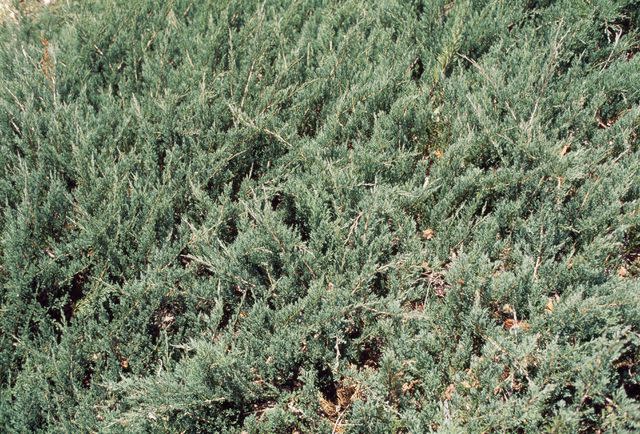
Sun Exposure Full
Soil Well-drained
Zones Zones 2 through 8
Color Varieties Green
Size Up to 15 feet tall and 12 feet wide
Juniper comes in many forms—but whether it serves as ground cover or a taller landscape item, this hardy shrub can deal with neglect, poor soil, and a lack of water. "Junipers are a very good drought tolerant option for the landscape," Singleton says. "From upright, to branching, to sprawling along the ground, junipers are a very versatile evergreen option."
Oregano (Origanum Vulgare)
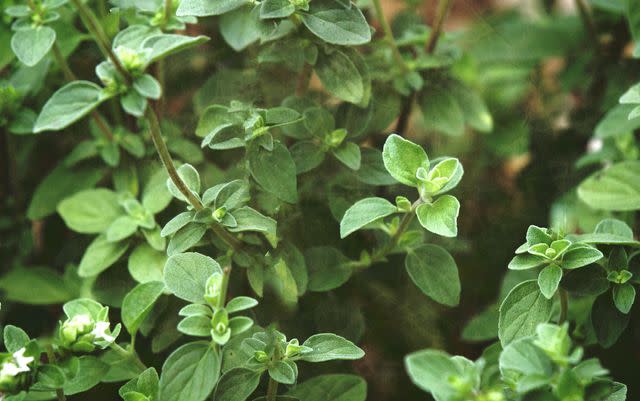
Sun Exposure Full
Soil Well-drained
Zones Zones 4 through 8
Color Varieties Green
Size Up to 2 feet tall and 1.5 feet wide
Many Mediterranean herbs thrive in drier conditions, including the perennial oregano. Oregano also produces pretty (edible) flowers that you can use in your cooking, in addition to the leaves. It's one of the best herb plants that don't need water.
Hellebore
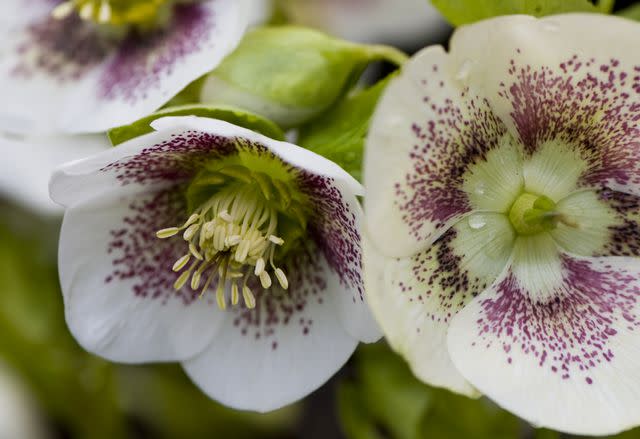
Sun Exposure Shade
Soil Moist, well-drained
Zones Zones 5 through 8
Color Varieties Pink, yellow, purple, and white
Size Up to 2 feet tall and wide
If you're looking for a drought-tolerant shade plant, the hellebore is a perfect addition to your garden. This perennial plant will require some watering early in their life cycle, but can tolerate drought after they're established.
Marigold (Tagetes)
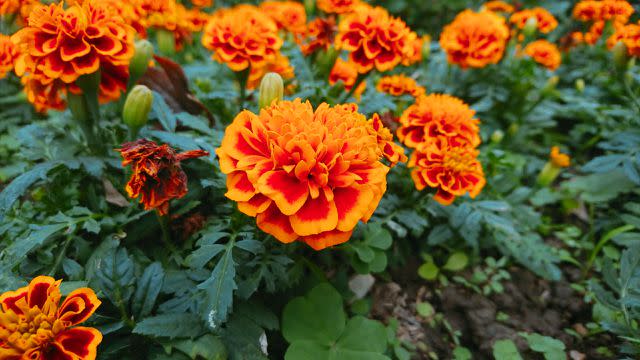
Mahantesh Biradar/EyeEm/Getty Images
Sun Exposure Full
Soil Moist, well-drained
Zones Zones 2 through 11
Color Varieties Red, orange, gold, yellow, white, and bicolor
Size Up to 4 feet tall and 2 feet wide
These long-blooming annual blooms are a gardener favorite (especially as they tend to help keep pests out of the garden!). These heat-tolerant plants need regular watering early on, but can tolerate drought later in the summer.
Santolina (Santolina Chamaecyparissus)
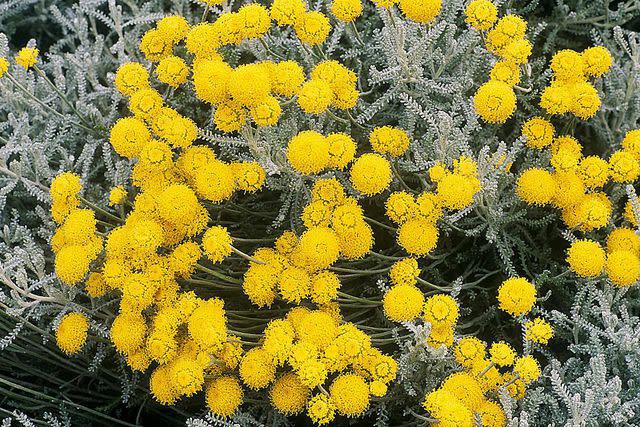
Sun Exposure Full to partial
Soil Sandy, well-drained
Zones Zones 6 through 9
Color Varieties Gold or yellow
Size Up to 2 feet tall and 3 feet wide
"Santolina is a Mediterranean transplant that works well in dry conditions," Lenhart says. "The bold yellow flowers are toned down a bit by its pale, sunbleached foliage." This hardy plant can tolerate not only drought, but poor soil conditions as well.
Butterfly bush (Buddleja Davidii)
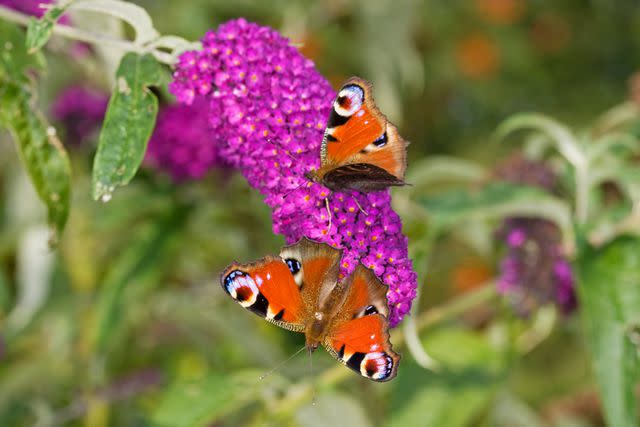
Roger Tidman/Getty Images
Sun Exposure Full
Soil Well-drained
Zones Zones 5 through 9
Color Varieties Pink, yellow, blue, purple, and white
Size Up to 12 feet tall and 8 feet wide
This pretty landscape shrub comes by common name honestly, as the bold, spiky flowers attract butterflies and other pollinators to your yard. Butterfly bushes thrive on neglect and while they prefer some moisture, they are drought tolerant.
Yucca (Yucca gloriosa)
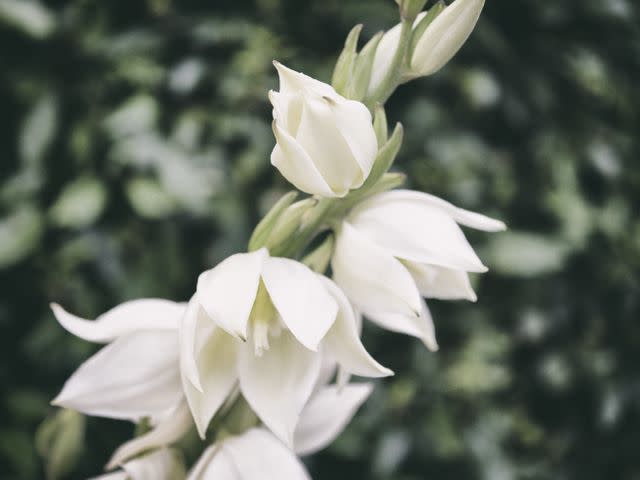
urbanglimpses/Getty Images
Sun Exposure Full or partial
Soil Well-drained
Zones Zones 7 through 11
Color Varieties Red, purple, cream, white
Size Up to 16 feet tall and 8 feet wide
This succulent, also known as the Spanish Dagger, thrives in hotter climates. It produces pretty flowers in the spring and summer. It can also make a gorgeous house plant, too.
Blanket Flower (Gaillardia)
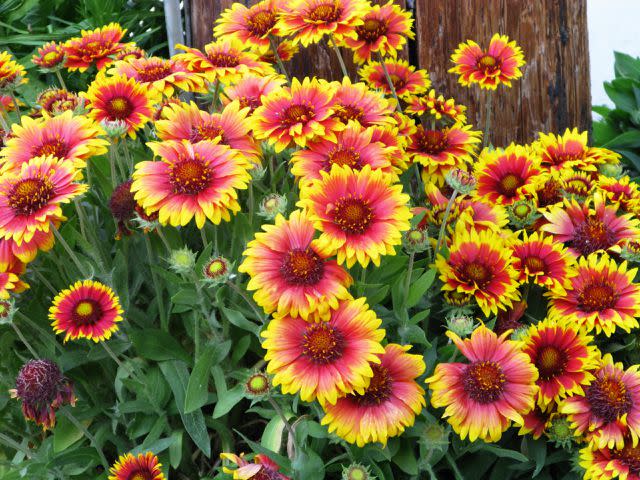
sassy1902/Getty Images
Sun Exposure Full
Soil Well-drained
Zones Zones 3 through 10
Color Varieties Red, orange, peach, and yellow
Size Up to 3 feet tall and 2 feet wide
These vibrant perennials thrive even in the poorest soil conditions and are among the most drought tolerant blooms out there. They're also prolific bloomers, producing flowers repeatedly from the summer into the fall.
Beardtongue (Penstemon)
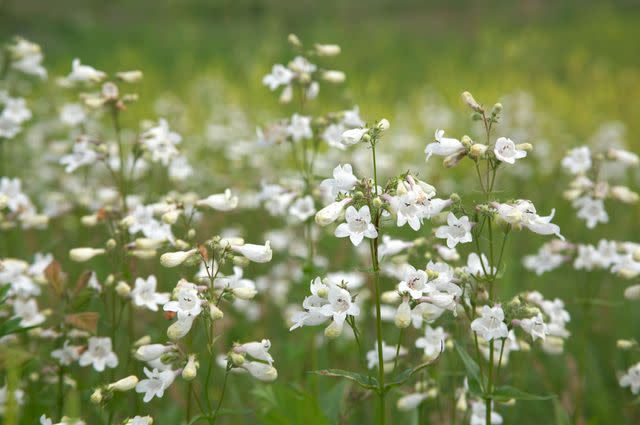
tacojim/Getty Images
Sun Exposure Full
Soil Well-drained
Zones Zones 3 through 8
Color Varieties Red, pink, orange, yellow, blue, purple, and white
Size Up to 8 feet tall and 20 feet wide
These relatives of other popular spiky blooms like snapdragons feature the same types of flowers. They prefer sandy, well-draining soil, as they're native to prairie areas.
Aloe
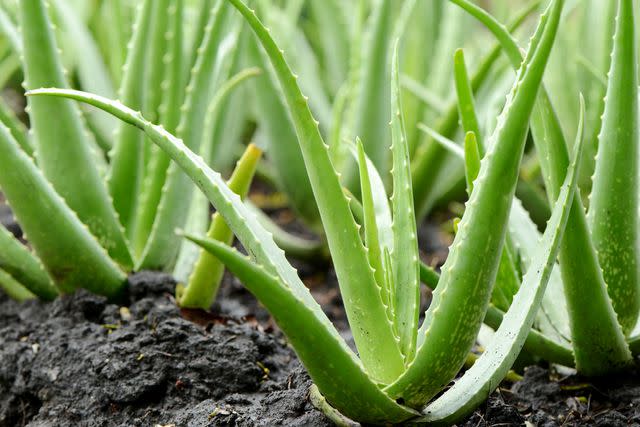
dangdumrong/Getty Images
Sun Exposure Full
Soil Well-drained
Zones Zones 10 through 12
Color Varieties Green
Size Up to 3 feet tall and 2 feet wide
These beloved houseplants can also be grown outdoors in the warmest areas of the country. Like most succulents, aloe plants thrive without much water at all, and will do better in sandy soils that mimic the desert environments they hail from.
Bee Balm (Monarda)
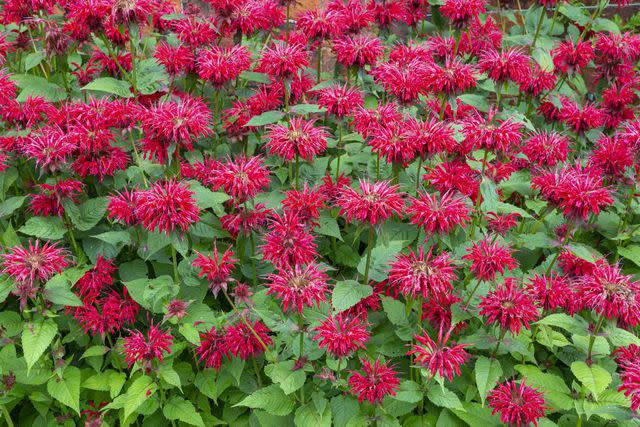
Photos by R A Kearton/Getty Images
Sun Exposure Full or partial
Soil Moist and well-drained
Zones Zones 3 through 9
Color Varieties Red, pink, lavender, purple, and white
Size Up to 4 feet tall and 3 feet wide
These vibrant flowers bloom from mid-summer into the fall, and is a favorite of pollinators like bees and hummingbirds. While it can tolerate some shade, it thrives best in full sunshine.
For more Real Simple news, make sure to sign up for our newsletter!
Read the original article on Real Simple.

